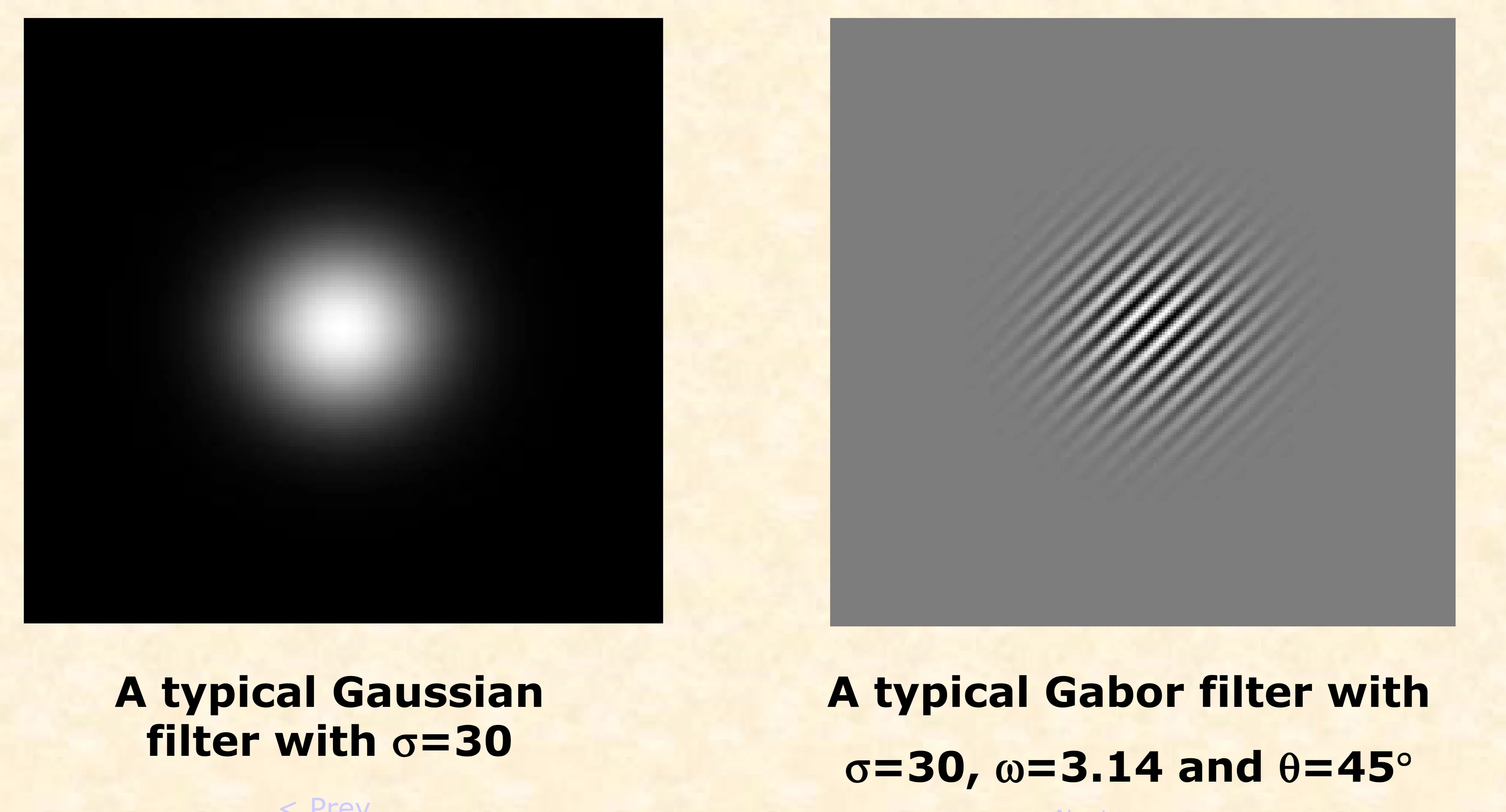Texture Definition and Analysis
Definition of Texture
Texture is defined as the regular repetition of an element or pattern on a surface.
Purpose of Texture Analysis
- Identify and differentiate: To identify different textured and non-textured regions within an image.
- Classify and segment: To classify or segment different texture regions within an image.
- Extract boundaries: To extract boundaries between major texture regions.
- Describe texel unit: To describe the basic texture element (texel unit).
- 3-D shape from texture: To infer 3-D shape from texture variations.
Texture Regions and Edges
Texture regions can be identified by examining the spatial variations in pixel intensities. Edges between texture regions represent abrupt changes in these spatial patterns.
Texture Classification Process
Typical Flow-chart
A typical texture classification method involves the following steps:
- Input Image: The original image to be analyzed.
- Filtering: Applying filters to enhance texture features.
- Smoothing: Reducing noise and creating a more uniform representation.
- Classifier: Using an algorithm to assign texture labels.
- Segmented Image: The output image with segmented texture regions.
Gabor Filters for Texture Analysis
2-D Gabor Filter
The 2-D Gabor filter is defined as:
Where:
- : spatial spread
- : frequency
- : orientation

Components of Gabor Filter
- Gaussian component: Provides localization in the spatial domain.
- Sinusoidal component: Provides frequency and orientation selectivity.
1-D Gabor Filter and Gaussian Function
1-D Gabor Filter:
1-D Gaussian Function:
Asymmetric 2-D Gaussian Function
An asymmetric Gaussian function can be used to create Gabor filters with varying shapes and orientations.
General Form of Gabor Filter
Where:
- : Scales the magnitude of the Gaussian envelope.
- : Scale the two axes of the Gaussian envelope.
- : (Rotation) angle of the Gaussian envelope.
- : Location of the peak of the Gaussian envelope.
- : Spatial frequencies of the sinusoidal carrier in Cartesian coordinates. It can also be expressed in polar coordinates as .
- : Phase of the sinusoidal carrier.
Gabor Filter Parameters
- Spatial width (): Controls the size of the filter.
- Frequency (): Determines the preferred frequency of the filter.
- Orientation (): Specifies the preferred orientation of the filter.
Fourier Transform of Gaussian and Gabor
Gaussian:
Gabor: The Fourier transform of a Gabor filter is a shifted Gaussian in the frequency domain.
Dyadic Bank of Gabor Filters
A dyadic bank consists of Gabor filters with frequencies scaled by powers of 2, providing octave band decomposition.
Properties of Gabor Filters
- Tunable bandpass filter: Can be adjusted to select specific frequencies.
- Similar to STFT: Similar to a Short-Time Fourier Transform or windowed Fourier transform.
- Uncertainty principle: Satisfies the lower-most bound of the time-spectrum resolution.
- Multi-scale, multi-resolution: Analyzes textures at different scales and resolutions.
- Selectivity: Has selectivity for orientation, spectral bandwidth, and spatial extent.
- Human visual cortex: Response is similar to that of the human visual cortex.
- Applications: Used in texture segmentation, iris, face, and fingerprint recognition.
- Computational cost: Often high due to the need for a large filter bank.
Examples of Texture Segmentation Using Gabor Filters
Texture Image Segmentation
Examples demonstrate how Gabor filters can be used to segment images based on texture:
- Texture Image: Input image with different texture regions.
- Magnitude of the Gabor Responses: Shows the strength of the filter responses.
- Smoothed Features: Creates a more uniform representation of the filter responses.
- Initial and Final Classification: Illustrates the process of assigning texture labels and refining the segmentation.
SIR-C/X-SAR Image Segmentation
Gabor filters can also be applied to Synthetic Aperture Radar (SAR) images for texture-based classification. Examples show:
- SIR-C/X-SAR image of Lost City of Ubar
- Classification using multispectral information
- Classification using multispectral and textural information
Filtering Methods, Non-linearity, Smoothing, Feature Vectors, and Classification
- Filtering methods: Various methods like Discrete Wavelet Transform (DWT), Gabor Filter, Discrete Cosine Transform (DCT), Gaussian Markov random field models, and combinations of these can be used for texture analysis.
- Non-linearity: The magnitude (|.|) operation is often used as a non-linearity.
- Smoothing: Gaussian filters are commonly used for smoothing.
- Feature vectors: The mean computed in a local window around a pixel can be used as a feature vector.
- Classification: Fuzzy-C Means (FCM) is an example of an unsupervised classifier used for texture classification.